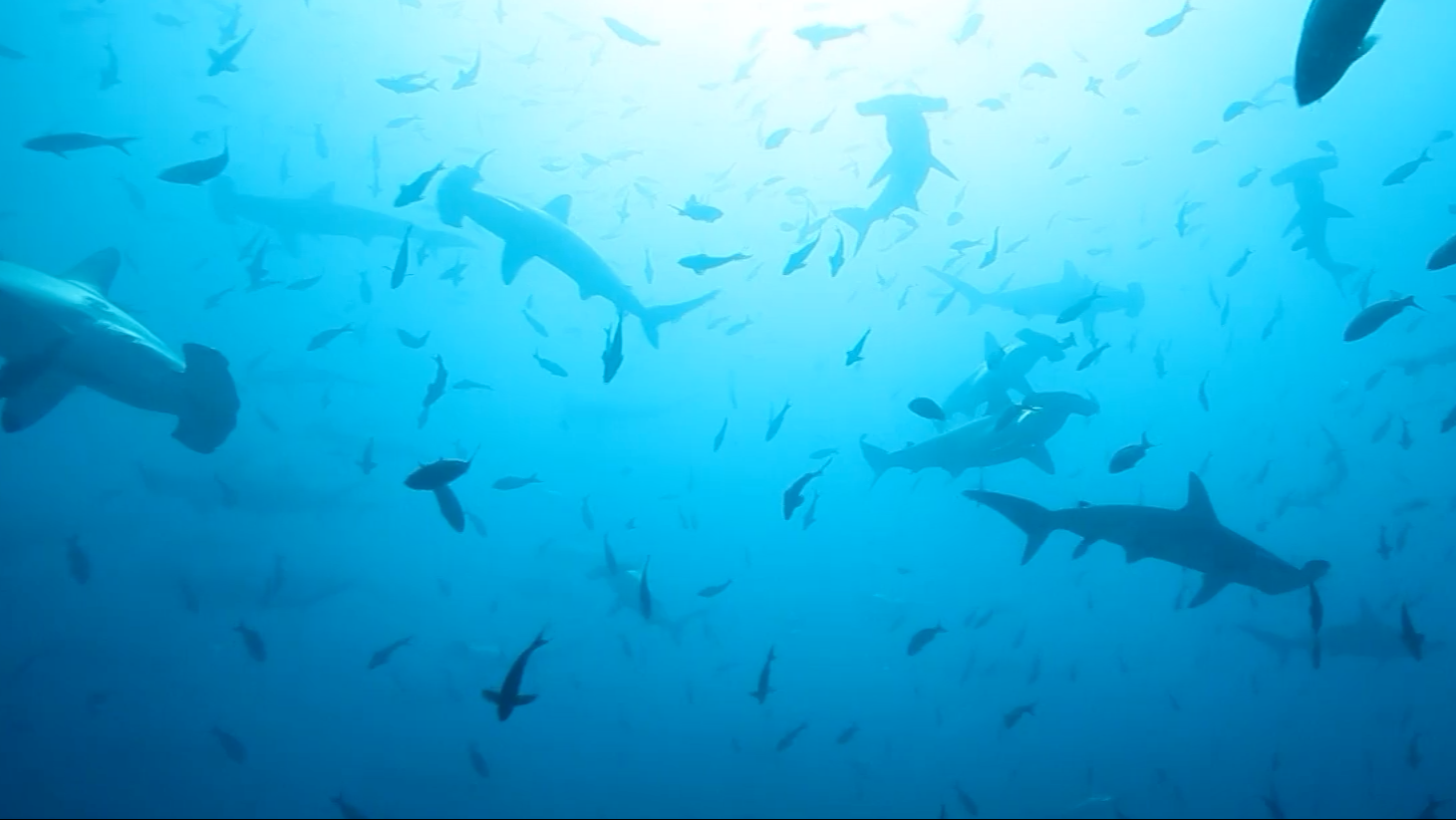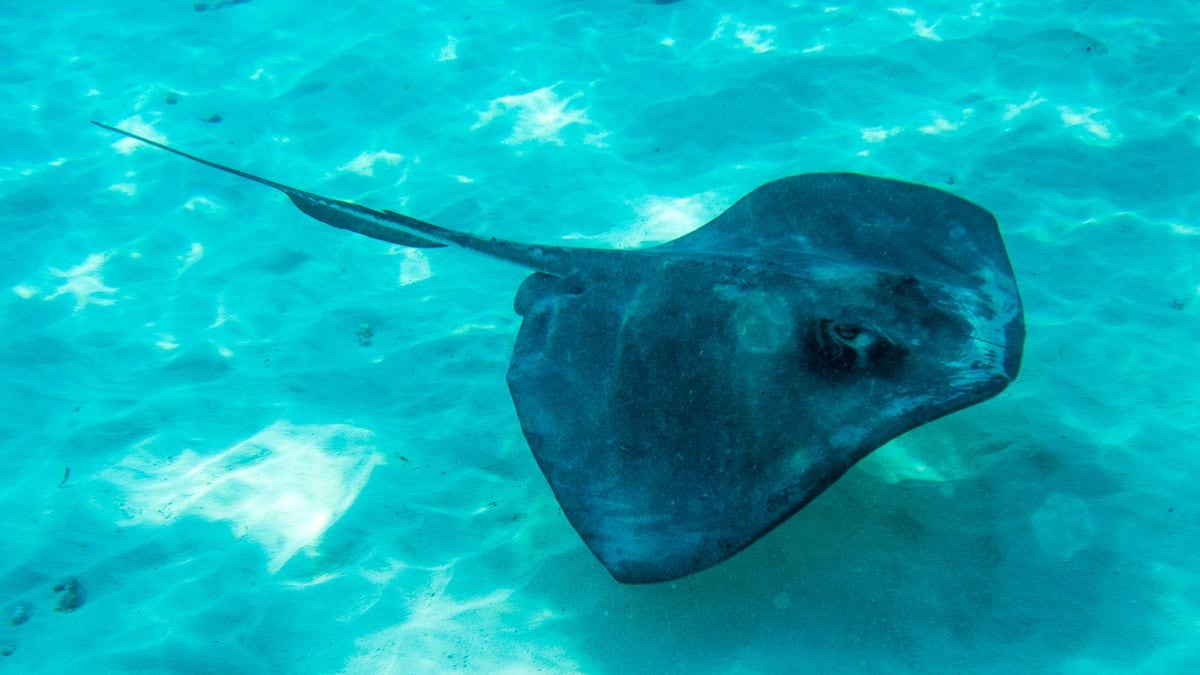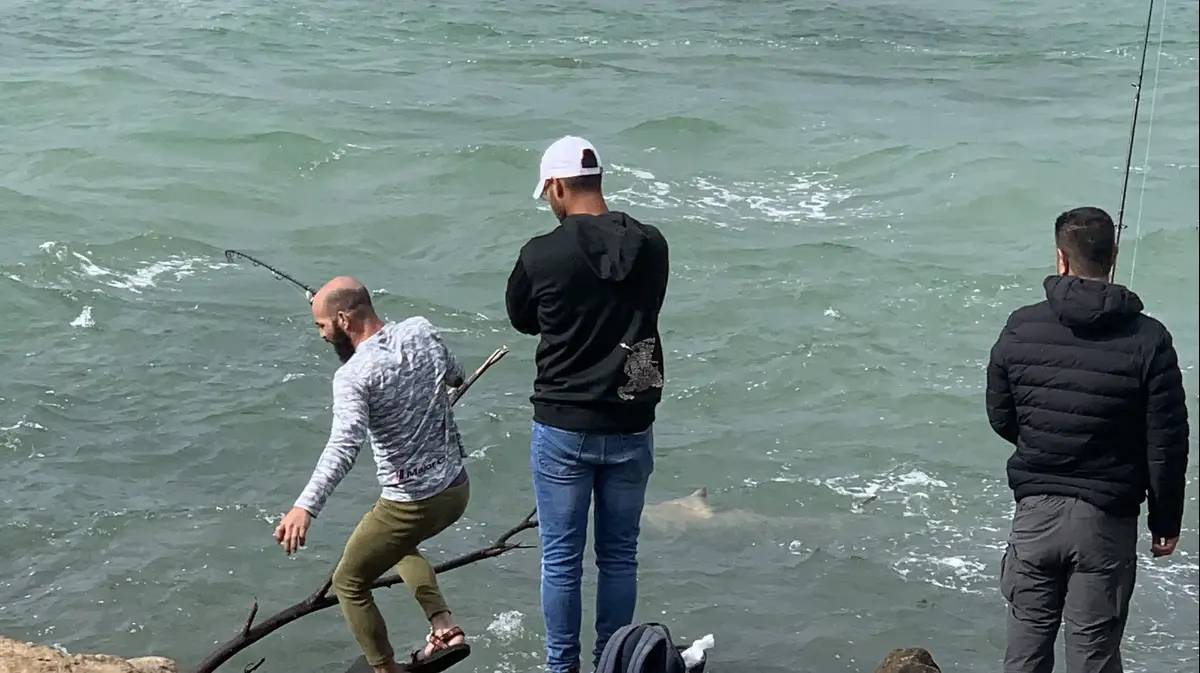The refuge of marine species in the Colombian Pacific 5:09
(CNN Spanish) --
The island of Malpelo, an oasis in the middle of the Pacific, is an example of how a job well done gives results: at a time when the world is facing a serious biodiversity crisis, this Colombian jewel is a shelter for the flora and fauna —especially for sharks, key to the health of the oceans— where science is also done and sustainable ecotourism is even allowed.
An "oasis" of the Pacific
Malpelo Island is an "oasis" in the middle of the Pacific Ocean, Sandra Bessudo, who has dedicated her life to working in the area, tells CNN: it is "the apex of a single submarine volcanic ridge whose walls descend to 4,000 meters meters deep and the highest part is 300 meters above sea level.
The island is home to a rich biodiversity.
There lives, for example, the largest population of Nazca boobies, as well as endemic species of lizards and crabs.
Underwater there are coral formations and, associated with this ecosystem, species of reef fish.
And they also inhabit multiple species of sharks - hammerheads, silkies, whales - that are key to the conservation of the oceans.
Today, all this life is heavily protected.
But it was not always like this.
The location of Malpelo on the Colombian Pacific coast.
"Just as I saw wonders, I also saw destruction"
Bessudo is a diver.
She came to the island of Malpelo for the first time in 1987 and was amazed.
"I fell in love with this place," she says, "but I also started to see the fishing boats pulling out all their wealth."
Back then it was not a protected area and "as I saw the wonders, I also saw the destruction," she says.
advertising
Then he made a decision: he would do everything in his power to protect her.
He began to collect signatures to request the Government to declare it a protected area.
She was integrated as head of the fauna and flora sanctuary that existed there, but she realized that they did not have the necessary resources.
She then went a step further and created the Malpelo Foundation and other marine ecosystems in order to obtain the resources that would allow her to be cared for as necessary.
The efforts of organizations such as Bessudo's, which have worked in alliance with the Government, have had results: today the island of Malpelo –which since 2006 has been considered a World Heritage Site– is on UNESCO's green list of areas that have been adequately protected.
"The united work among all has allowed us to carry out the necessary actions to carry out research and monitoring, communications and environmental education, have a sustainable ecotourism and with good practices, obtain financial resources for the implementation of all the actions that must be carried out in the area protected," he explains.
1 of 5
|
Malpelo Island is the Colombian jewel of biodiversity: it is a shelter for flora and fauna —especially for sharks, keys to the health of the oceans— where science is also done and sustainable ecotourism is even allowed.
(Credit: Malpelo Foundation and Other Marine Ecosystems) →
2 of 5
|
Sandra Bessudo releases a shark into her habitat.
(Credit: Malpelo Foundation and Other Marine Ecosystems)
3 of 5
|
The imposing hammerhead sharks (Credit: Malpelo Foundation and Other Marine Ecosystems)
4 out of 5
|
Shark approaches telemetry equipment (Credit: Malpelo Foundation and Other Marine Ecosystems)
5 out of 5
|
Sandra Bessudo taking images of marine species (Credit: Malpelo Foundation and Other Marine Ecosystems)
The key role of sharks
Malpelo Island is "an ecosystem teeming with life, both on land and underwater," says Bessudo.
And all the living beings that inhabit it, from plankton to large species such as sharks, contribute to the health of the waters by providing great services, including oxygen: although we always associate trees with the generation of oxygen, Water is also a source of this vital element.
About half of the planet's oxygen is produced in the oceans, and a large part of that oxygen in the oceans is produced by plankton.
But the survival of sharks is strongly threatened.
There are countries that allow the export of fins from some shark species to supply Asian markets where soups with this ingredient are eaten, considered a delicacy, or for the use of cartilage in the cosmetics industry, explains Bessudo.
The figures in this regard are clear: according to WWF's 2022 Living Planet report, the abundance of 18 of the 31 known species of oceanic sharks and rays fell by 71% in the last 50 years.
Accordingly, the risk of extinction increased severely.
In 1980, according to the organization, nine species were at risk of extinction;
by 2020, the number reached 24.
"An ocean without sharks is not a healthy ocean," Bessudo explains.
They are the "great regulators" of the health of the oceans since, for example, they feed on other sick specimens, "preventing epidemics in the sea."
The presence of sharks on the island is precisely the best indicator of good care.
Science and technology at the service of the island of Malpelo
One of the objectives of the Malpelo Foundation for the future is to continue supporting scientific expeditions in the region.
"Science is what allows us to have information for everything, so that governments can make the best possible decision," sums up Bessudo.
And he continues: "We are exploring seamounts. They are those mountains that are under the sea, that have a lot of life and about which we know very little."
The work of his foundation, which has focused especially on sharks and pelagic species—that live in mid-water or near the surface—makes use of cutting-edge technology as well.
They use, for example, satellite telemetry and acoustic telemetry to understand the movements and migrations of these species.
And this has made them understand that the work cannot be limited to an island or even a country because species migrate beyond national limits.
This information, he explains, is what has allowed them to promote the creation of new marine protected areas.
Our time to act
Bessudo is convinced that each person can make a contribution to the conservation of the planet and gives three daily examples of possible actions: make responsible use of water, avoid unnecessary electricity consumption and properly dispose of our waste.
"It's simply acting. We can no longer continue talking, talking, talking... it's time to act," he sums up.
sharks














